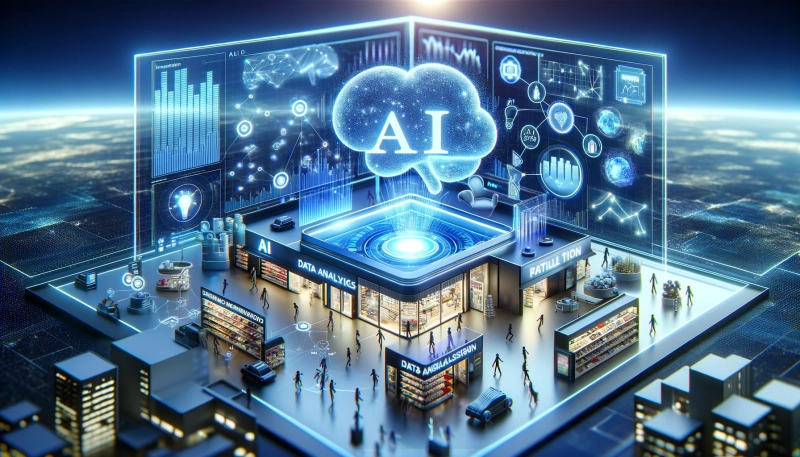New Embedding Models: Setting New Standards for Performance
OpenAI has unveiled two groundbreaking embedding models: text-embedding-3-small and text-embedding-3-large. These models are engineered to improve performance and efficiency for developers working on AI-driven projects. The text-embedding-3-large model, in particular, stands out with its support for up to 3072 dimensions, offering unprecedented depth and nuance in text analysis capabilities. These embedding models are tailored to facilitate a wide range of tasks, from semantic search to content categorization, by providing more accurate and nuanced understanding of text data.
GPT-4 Turbo and GPT-3.5 Turbo: Enhanced for Optimal Performance
In addition to the new embedding models, OpenAI has rolled out significant updates to the GPT-4 Turbo and GPT-3.5 Turbo models. These updates address key issues such as model "laziness" and bugs, which previously impacted their performance, especially in tasks like code generation. By tackling these issues, OpenAI ensures that the GPT-4 Turbo and GPT-3.5 Turbo models are more reliable and efficient, enhancing their utility for developers and organizations across various industries.
The term "model laziness" refers to instances where AI models opt for simpler, less computationally intensive paths to generate responses, sometimes at the expense of accuracy or relevance. Addressing this behavior is crucial for tasks requiring precision and detailed understanding, such as code generation, where accuracy is paramount.
Implications for Developers and the Future of AI
These updates and new features from OpenAI are set to have profound implications for the development and application of AI technologies. By providing more powerful and efficient models, OpenAI not only enhances the capabilities of developers but also opens up new possibilities for innovation in AI applications. Whether it's improving the accuracy of natural language processing tasks or enabling more sophisticated AI-powered tools, these advancements are a testament to the rapid progress in the field of AI.
Conclusion
The recent advancements in GPT models by OpenAI represent a significant step forward in the field of artificial intelligence. With the introduction of new embedding models and updates to the GPT-4 Turbo and GPT-3.5 Turbo models, OpenAI continues to push the boundaries of what's possible, offering developers and organizations powerful tools to drive innovation. As these technologies continue to evolve, the potential for transformative applications across industries grows, heralding a new era of AI-driven solutions.
As we reflect on these developments, it's exciting to consider what the future holds. How will these advanced models transform industries, and what new capabilities will they unlock? The journey of AI innovation is far from over, and the road ahead promises even more groundbreaking advancements.
GPT-4 Turbo and GPT-3.5 Turbo: Enhanced for Optimal Performance
In addition to the new embedding models, OpenAI has rolled out significant updates to the GPT-4 Turbo and GPT-3.5 Turbo models. These updates address key issues such as model "laziness" and bugs, which previously impacted their performance, especially in tasks like code generation. By tackling these issues, OpenAI ensures that the GPT-4 Turbo and GPT-3.5 Turbo models are more reliable and efficient, enhancing their utility for developers and organizations across various industries.
The term "model laziness" refers to instances where AI models opt for simpler, less computationally intensive paths to generate responses, sometimes at the expense of accuracy or relevance. Addressing this behavior is crucial for tasks requiring precision and detailed understanding, such as code generation, where accuracy is paramount.
Implications for Developers and the Future of AI
These updates and new features from OpenAI are set to have profound implications for the development and application of AI technologies. By providing more powerful and efficient models, OpenAI not only enhances the capabilities of developers but also opens up new possibilities for innovation in AI applications. Whether it's improving the accuracy of natural language processing tasks or enabling more sophisticated AI-powered tools, these advancements are a testament to the rapid progress in the field of AI.
Conclusion
The recent advancements in GPT models by OpenAI represent a significant step forward in the field of artificial intelligence. With the introduction of new embedding models and updates to the GPT-4 Turbo and GPT-3.5 Turbo models, OpenAI continues to push the boundaries of what's possible, offering developers and organizations powerful tools to drive innovation. As these technologies continue to evolve, the potential for transformative applications across industries grows, heralding a new era of AI-driven solutions.
As we reflect on these developments, it's exciting to consider what the future holds. How will these advanced models transform industries, and what new capabilities will they unlock? The journey of AI innovation is far from over, and the road ahead promises even more groundbreaking advancements.





